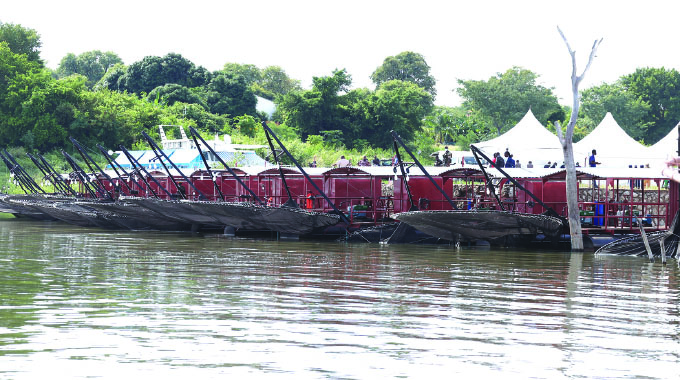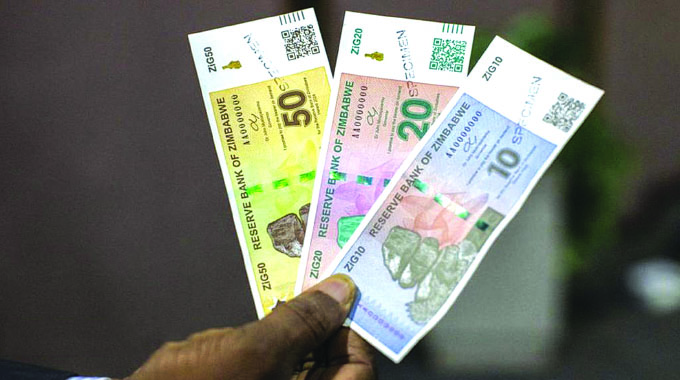Horticulture cash crop farming on the rise in Zim

Sifelani Tsiko
Agric & Innovations Editor
Zimbabwe’s horticultural sector is fast emerging as a major driving force for the development of agricultural sectors in the country.
Several indicators are already casting a shining light on this sector.
First, it is enjoying phenomenal growth and raking in millions of foreign currency for the country.
Horticulture exports in 2021 grew by 6,8 percent to US$64,6 million from US$59,5 million recorded in 2020, according to the trade promotion body, ZimTrade.
This growth was driven by macadamia nuts exports which contributed US$13,8 million, citrus at US$10,9 million, vegetables at US$4,2 million and flowers at US$3,2 million.
The sector has set the country’s horticultural sector on growth trajectory fanning hopes for a diversified agricultural sector with increased resilience to shocks on the commodities markets, climate change and other economic factors.
Before the fast track land reform programme, Zimbabwe was one of the top horticultural exporters to the European Union, supplying fresh fruit and flowers to some of the world’s leading supermarket chains.
The industry was dominated by white commercial farmers, but now a mix of indigenous farmers and foreign investors are spearheading the horticulture sector recovery and growth.
The country is once more reclaiming its position in the global horticultural industry.
All this demonstrates that local farmers can!
With the right support and investments they are rising to the occasion, stimulating export growth through increased production and exploiting opportunities coming with growing global demand.
Today, the horticultural sector is flourishing and burying tales of the past “sorry state.”
Indigenous farmers and new investors are pressing on, keeping their exports rising, despite the high costs of production and a difficult economic operating environment.
Figures and stats are sounding a note of optimism for this sector.
And recently, Permanent Secretary in the Ministry of Lands, Agriculture, Fisheries, Water and Rural Development, Dr John Basera, said the country was now the biggest exporter of blueberries in the SADC region supplying 5 000 tonnes a year.
“We are inspecting the horticulture recovery growth in motion and we believe that we are moving in the right direction in terms of getting back to those glory numbers where Zimbabwe used to export US$143 million a year in terms of horticultural exports,” he said while on a tour of Palmlife Blueberry Project at Ivanhoe Farm in Goromonzi which produces more than 1 000 tonnes annually.
“Currently, we are sitting at around US$60 million to US$70 million a year and we need to double that in the next year. By 2025 we need to approach US$500 million. Blueberry is one of those high value horticultural options which we definitely need to promote.
“We have many advantages as Zimbabwe in terms of the geographical and climate advantages. We need to promote more hectarage under blueberries and we believe that horticulture is a low hanger in achieving some of the objectives of Vision 2030.”
Zimbabwe is now targeting high value horticultural products to boost its foreign currency earnings, create jobs and diversify its agricultural production base.
Global production for blueberries stands at more than 850 000 tonnes a year with lucrative markets dotted around the world.
Blueberries are a horticultural crop highly suitable to Zimbabwean soils, climate and conditions. Many farmers and agricultural experts believe strongly that Zimbabwe has what it takes to assume a strong place in fresh produce export — flowers, fruit and vegetables.
“This crop costs about US$100 000 per hectare to plant and it will yield that much foreign currency every year going forward. This year we are expecting to export between 1 000 to 1 200 tonnes of blueberries,” said Bob Henson, owner of Ivanhoe Farm and DripTech managing director.
“The total Zimbabwean production is 5 000 tonnes and we export to Russia and the Middle East, but most of our exports go to a company in the United Kingdom for distribution across Europe.
“On average a kilogramme costs between US$2,50 and US$6 depending on demand. We have created 1 000 jobs and we want to repeat the same model across the country because we want to work with communities.”
Realising the huge opportunities that lie in this sector, the Government set up the Horticultural Development Council (HDC) to track development trends and opportunities, provide insights and analysis with the aim of attracting foreign direct investment into Zimbabwean horticulture. The agriculture sector has already hit the initial 2025 target of US$8,2 billion a year as the industry grew by 36,2 percent to US$8,19 billion in 2021, but is expected to continue growing by another 10 percent this year.
“The Horticultural Development Council plays a vital role in improving horticultural business efficiency and competitiveness in Zimbabwe. It represents 77 percent of the current horticultural export turnover of Zimbabwe,” said Vangelis Haritatos Deputy Minister of Lands at a forum for investment in the horticultural sector.
“Our country is on a path to win back its regional status of food security and surplus.”
Horticulture contributes about 6,5 percent to total agricultural output and 0,7 percent of Zimbabwe’s total gross domestic product.
The entire agriculture sector earns the country more than US$77 million in export revenues at present.
At its peak, the horticulture industry generated more than US$130 million in export earnings before it fell to about US$20 million around 2009.
The horticultural sector is on a rebound. It is bullish now and the HDC is hoping for a 30 percent annual growth rate for the sector by 2030. In the coming one or two years, Zimbabwe can easily breeze past the US$130 million earnings made before 2009.
HDC chairperson Stanley Heri says the sector could rake in some US$1 billion in export earnings to the economy if Zimbabwe develops a unique competitive brand for its products.
“I am convinced Zimbabwe’s unique selling proposition to the international community is the production of quality products,” he said.
“In my view, Zimbabwe is a sleeping giant, taking into account what’s happening in Ethiopia and Kenya, where 70 percent of fresh produce is produced by the small-scale sector through the hub-and-spoke model.”
Zimbabwe Indigenous Women Farmers Association Trust president, Mrs Depinah Nkomo said there was need for empowerment of smallholder farmers on infrastructural development and also on market requirements.
“Smallholder farmers especially women require irrigation infrastructure so they can produce high value crops throughout the year. Some of the women have the zeal to produce but lack technical expertise and do not have adequate information on the market requirements,” she said.
“Experts should link us to lucrative markets and educate us on the requirements of the international markets we will be able to realise huge profits from the horticulture industry.”
Horticulture is a massive growth industry and Zimbabwe is in an excellent position to help feed the world, due to its fresh and pure produce, which is grown on good soils, pristine water and a variety of climatic conditions.
There is plenty of goodness on the Zimbabwean ground to grow great food required by the rich markets.
What Zimbabwe needs to do, is to investment in both existing and new varieties of crops, improve growing techniques and harvest and post-harvest practices.







Comments